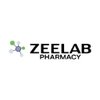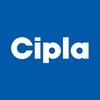Pharmacist
80+ Pharmacist Interview Questions and Answers for Freshers

Asked in Max Healthcare

Q. What is the full form of the Latin terms OD, BD, and TDS?
The full form of Latin term od BD, OD & TDS are Once a day, Twice a day, and Three times a day respectively.
OD - Once a day
BD - Twice a day
TDS - Three times a day

Asked in Medkart Pharmacy

Q. Give me a few names of Blood pressure medicine or Diabetes medicine or cholesterol medicine with content
Blood pressure medicine, diabetes medicine, and cholesterol medicine with content.
Blood pressure medicine: Lisinopril, Amlodipine, Metoprolol
Diabetes medicine: Metformin, Insulin, Glipizide
Cholesterol medicine: Atorvastatin, Simvastatin, Rosuvastatin

Asked in Hetero

Q. What is chromatography?
Chromatography is a technique used to separate and analyze mixtures of substances based on their different properties.
Chromatography involves a stationary phase and a mobile phase.
The stationary phase can be a solid or a liquid that is fixed in place.
The mobile phase is a liquid or gas that carries the mixture through the stationary phase.
Different components of the mixture interact differently with the stationary phase, leading to separation.
Common types of chromatography in...read more

Asked in Apollo Hospitals

Q. What is the classification of antibiotics, and can you provide examples for each category?
Antibiotics are classified into several categories based on their mechanism of action and spectrum of activity.
Classification of antibiotics includes beta-lactams, macrolides, tetracyclines, aminoglycosides, fluoroquinolones, and sulfonamides.
Examples of beta-lactams include penicillin and cephalosporins.
Macrolides include erythromycin and azithromycin.
Tetracyclines include doxycycline and tetracycline.
Aminoglycosides include gentamicin and amikacin.
Fluoroquinolones include c...read more

Asked in Medkart Pharmacy

Q. What is a generic medicine? and how are they different from ethical or branded?
Generic medicines are copies of branded drugs that have the same active ingredients, dosage, and efficacy.
Generic medicines are cheaper than branded drugs.
They are approved by regulatory authorities after proving bioequivalence with the branded drug.
They have the same dosage, strength, route of administration, and intended use as the branded drug.
Generic medicines may have different inactive ingredients, which can affect the drug's appearance, taste, and shelf life.
Examples o...read more

Asked in Apollo Hospitals

Q. What are anti-epileptic drugs, and can you provide examples?
Anti-epileptic drugs are medications used to treat seizures and epilepsy by stabilizing electrical activity in the brain.
Anti-epileptic drugs (AEDs) are also known as anticonvulsants.
They work by reducing the excessive electrical activity in the brain that causes seizures.
Examples of AEDs include phenytoin, carbamazepine, valproic acid, levetiracetam, and lamotrigine.
Pharmacist Jobs




Asked in Zeelab Pharmacy

Q. What is gram-positive bacteria?
Gram positive bacteria are a type of bacteria that retain the crystal violet stain during the Gram staining process.
Gram positive bacteria have a thick peptidoglycan layer in their cell wall
They appear purple or blue when stained with crystal violet
Examples include Staphylococcus aureus, Streptococcus pneumoniae, and Clostridium difficile

Asked in Dhani Healthcare

Q. What is the role of a pharmacist in healthcare?
Pharmacists play a crucial role in healthcare by ensuring safe and effective medication use.
Dispensing medications and providing instructions on proper usage
Monitoring patients' medication therapy and identifying potential drug interactions
Collaborating with healthcare professionals to optimize patient outcomes
Educating patients on medication adherence and potential side effects
Participating in medication management and counseling for chronic diseases
Compounding medications f...read more
Share interview questions and help millions of jobseekers 🌟


Asked in Max Healthcare

Q. Tell me the name of a Schedule H drug.
Schedule H drugs are prescription drugs which are required to be sold by prescription only.
Schedule H drugs are drugs which have a higher potential for abuse and addiction.
These drugs are considered to be more dangerous and have stricter regulations for their sale and distribution.
Examples of Schedule H drugs include opioids like morphine and codeine, as well as certain stimulants and sedatives.

Asked in Max Healthcare

Q. How many drops are in 1 ML?
There are typically 20 drops in 1 mL of liquid medication.
There are variations depending on the viscosity of the liquid and the dropper size.
It is important to follow the instructions provided by the pharmacist or healthcare provider.
For example, a medication may require 10 drops for a 0.5 mL dose.

Asked in Dhani Healthcare

Q. What is the procedure when Drug Inspectors visit?
Drug inspectors visit to ensure compliance with drug laws and regulations.
Drug inspectors visit unannounced to check for compliance with drug laws and regulations.
They inspect the premises, records, and inventory of drugs.
They may also take samples of drugs for testing.
The pharmacy staff should cooperate with the inspectors and provide them with the necessary information.
If any violations are found, the inspectors may take legal action against the pharmacy.

Asked in Apollo Pharmacy

Q. What are some common diabetic drugs?
The diabetic drug is a medication used to treat diabetes by controlling blood sugar levels.
There are several types of diabetic drugs, including insulin, metformin, sulfonylureas, and GLP-1 receptor agonists.
Insulin is a hormone that regulates blood sugar levels and is often used to treat type 1 diabetes.
Metformin is a commonly prescribed medication for type 2 diabetes that helps reduce glucose production in the liver.
Sulfonylureas stimulate the pancreas to produce more insuli...read more

Asked in Apollo Hospitals

Q. What is the definition of bioavailability?
Bioavailability refers to the proportion of a drug or substance that enters the bloodstream when introduced into the body, and is therefore able to have an active effect.
Bioavailability is the measure of the rate and extent to which a drug reaches systemic circulation.
It is influenced by factors such as route of administration, metabolism, and drug formulation.
For example, intravenous administration typically has 100% bioavailability, while oral administration may have lower ...read more

Asked in Cipla

Q. What are some common antibiotic medications?
Antibiotics are medications used to treat bacterial infections by killing or inhibiting the growth of bacteria.
Penicillins: e.g., Amoxicillin, Penicillin G
Cephalosporins: e.g., Cephalexin, Ceftriaxone
Macrolides: e.g., Azithromycin, Erythromycin
Tetracyclines: e.g., Doxycycline, Tetracycline
Fluoroquinolones: e.g., Ciprofloxacin, Levofloxacin
Asked in India Pharma People

Q. Are there any risks associated with prescribing medicines to patients?
Yes, there are risks associated with prescribing medicines to patients.
All medicines have potential side effects and risks
Prescribing the wrong medication or dosage can lead to adverse reactions
Patients may have allergies or other medical conditions that make certain medications unsafe
Drug interactions can occur when multiple medications are prescribed
Improper use or abuse of medications can also pose risks
Pharmacists must carefully consider all of these factors when prescrib...read more

Asked in Sumitra Hospital

Q. What are the classifications of antihypertensive drugs?
Antihypertensive drugs are classified into several categories based on their mechanism of action.
Diuretics (e.g. hydrochlorothiazide)
Beta blockers (e.g. metoprolol)
ACE inhibitors (e.g. lisinopril)
ARBs (e.g. losartan)
Calcium channel blockers (e.g. amlodipine)
Asked in India Pharma People

Q. What precautions should a pharmacist take?
Pharmacists must take various precautions to ensure patient safety and avoid medication errors.
Verify prescriptions and dosages before dispensing medication
Check for drug interactions and allergies
Ensure proper storage and handling of medications
Provide clear instructions to patients on how to take their medication
Keep up-to-date with new medications and their potential side effects
Maintain accurate records of all medications dispensed
Report any adverse reactions or medicatio...read more
Asked in Liboc Davamart

Q. What is the difference between Patent and Generic drugs?
Patent drugs are exclusive to the original manufacturer while generic drugs are copies of the original drug.
Patent drugs are developed by pharmaceutical companies and are exclusive to them for a certain period of time.
Generic drugs are copies of the original drug and can be produced by any company once the patent has expired.
Patent drugs are usually more expensive than generic drugs.
Generic drugs must have the same active ingredient, strength, dosage form, and route of admini...read more

Asked in Flipkart Health+

Q. Describe the difference between a therapeutic dose and a lethal dose.
Therapeutic dose is the amount of medication required to produce the desired therapeutic effect, while lethal dose is the amount that can cause death.
Therapeutic dose is determined based on factors such as patient's age, weight, and medical condition.
It is important to find the right therapeutic dose to achieve the desired treatment outcome without causing harm.
Lethal dose refers to the amount of a substance that can be fatal if ingested, injected, or absorbed.
Lethal dose var...read more
Asked in Sukoon Health Hospital

Q. What is the cold chain medicines and what is the temperature of freeze
Cold chain medicines are medications that require specific temperature control to maintain their efficacy and safety.
Cold chain medicines are medications that are sensitive to temperature and require specific storage and transportation conditions.
These medicines need to be stored and transported within a specific temperature range to ensure their effectiveness and safety.
The temperature of freeze for cold chain medicines is typically below 0 degrees Celsius (32 degrees Fahren...read more

Asked in Medicine

Q. All medicine and it's used and administration and absorption of drug
Understanding medicine, its uses, administration, and drug absorption is crucial for a pharmacist.
Pharmacists must have a thorough understanding of different types of medications and their uses.
They must also know how to properly administer medications to patients.
Understanding drug absorption is important to ensure that patients receive the correct dosage and experience the desired effects.
Pharmacists must also be knowledgeable about potential side effects and drug interacti...read more
Asked in Liboc Davamart

Q. What is the meaning of the Rx symbol on a prescription?
Rx symbol on Prescription means 'prescription' or 'recipe'.
Rx is an abbreviation for the Latin word 'recipe', which means 'take'
It is used as a medical prescription symbol to indicate that a medication or treatment is to be dispensed
The symbol is often followed by the name of the medication, dosage, and instructions for use
The Rx symbol is also used in the pharmaceutical industry to indicate a drug that requires a prescription
The symbol has been used for centuries and is stil...read more

Asked in Medkart Pharmacy

Q. What are the ingredients of DOLO medicine?
DOLO medicine is a combination of paracetamol and caffeine used for relieving pain and reducing fever.
DOLO medicine contains paracetamol and caffeine.
Paracetamol is a common pain reliever and fever reducer.
Caffeine is added to enhance the analgesic effect of paracetamol.
It is commonly used for headaches, body aches, and fever.
Examples of DOLO medicine brands include DOLO 650 and DOLO 500.

Asked in Zeelab Pharmacy

Q. Name five antibiotics.
Antibiotics are medications used to treat bacterial infections. Here are five commonly used antibiotics:
Penicillin: Effective against a wide range of bacteria.
Amoxicillin: Used to treat various infections, including respiratory and urinary tract infections.
Ciprofloxacin: Often prescribed for urinary tract and respiratory infections.
Azithromycin: Effective against respiratory and skin infections.
Doxycycline: Used to treat acne, respiratory infections, and Lyme disease.
Asked in Chhatrapati Shivaji Maharaj Hospital

Q. What are the responsibilities of a pharmacist?
Pharmacists are responsible for dispensing medications, providing advice on drug interactions and side effects, and ensuring patient safety.
Dispensing medications accurately and safely
Providing advice on drug interactions and side effects
Ensuring patient safety by checking for allergies and contraindications
Collaborating with healthcare professionals to optimize patient care
Maintaining accurate records of medications dispensed and patient information

Asked in Batra Hospital

Q. What is the antidote for paracetamol?
N-acetylcysteine is the antidote for paracetamol overdose.
N-acetylcysteine is the antidote for paracetamol toxicity
It works by replenishing depleted glutathione stores in the liver
Administration within 8-10 hours of overdose is crucial for efficacy

Asked in Alembic Pharmaceuticals

Q. What is pharmacology?
Pharmacology is the study of how drugs interact with living organisms to produce a therapeutic effect.
Pharmacology involves studying the effects of drugs on the body, including their mechanisms of action, side effects, and interactions.
It also includes the study of drug development, drug delivery systems, and drug metabolism.
Pharmacology is essential for understanding how medications work and for ensuring their safe and effective use in patients.
Asked in Sukoon Health Hospital

Q. What do you know about H1 and narcotic drugs?
H1 drugs are antihistamines used to treat allergies. Narcotic drugs are opioids used for pain relief.
H1 drugs are commonly used to relieve symptoms of allergies such as sneezing, itching, and runny nose.
Examples of H1 drugs include cetirizine, loratadine, and fexofenadine.
Narcotic drugs, also known as opioids, are powerful pain relievers.
They work by binding to opioid receptors in the brain and spinal cord to reduce pain perception.
Examples of narcotic drugs include morphine,...read more
Asked in Smart Chemist

Q. What is the role of a pharmacist?
Pharmacists play a crucial role in healthcare by ensuring safe and effective use of medications.
Dispensing medications and providing instructions on their proper use
Monitoring patients' medication therapy and ensuring its effectiveness
Collaborating with healthcare professionals to optimize patient care
Counseling patients on medication side effects and potential drug interactions
Compounding medications and preparing specialized dosage forms
Educating patients and the community ...read more

Asked in Hetero

Q. What is molarity?
Molarity is a measure of the concentration of a solute in a solution.
Molarity is defined as the number of moles of solute per liter of solution.
It is denoted by the symbol 'M'.
Molarity is commonly used in pharmacy to prepare and dilute solutions.
For example, a 1 M (1 molar) solution of sodium chloride contains 1 mole of sodium chloride dissolved in 1 liter of solution.
Interview Questions of Similar Designations
Interview Experiences of Popular Companies






Calculate your in-hand salary
Confused about how your in-hand salary is calculated? Enter your annual salary (CTC) and get your in-hand salary


Reviews
Interviews
Salaries
Users










